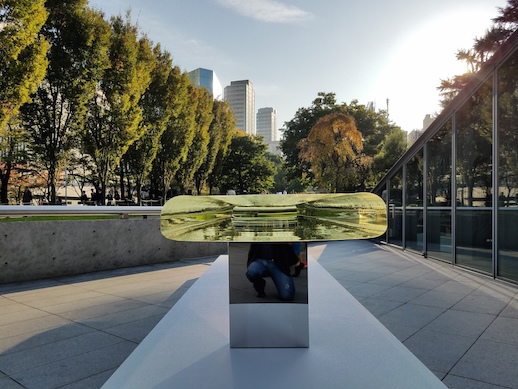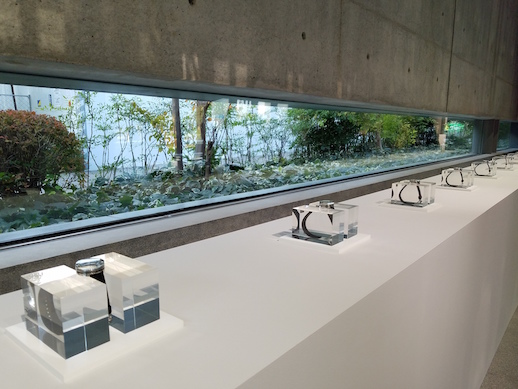Tokujin Yoshioka’s Glass Project
Anyone who has visited the Impressionist section of the Musee D’Orsay in Paris and wanted to sit down and admire some of the masterpieces has interacted with Tokujin Yoshioka’s work. His mesmerizing Water Block glass benches have been a permanent fixture there since 2011. He also has works in the permanent exhibitions of other key institutions, such as the Honey-Pop chair at the V&A in London and MoMA in New York.
Now those in Tokyo can enjoy Yoshioka’s “Glass Project.” This small exhibition at 21_21 Design Site Gallery 3 until 13 November provides a brief retrospective of Yoshioka’s career so far. The works begin outside with Waterfall, a table made of the world’s largest optical glass. The piece captures magical reflections of the cedar trees in Midtown Park and the Tadao Ando-designed museum.

On entering the building, you are greeted with a 12-minute video that showcases Yoshioka’s design, beginning with Transparent Glass House (2002) and Chair That Disappears in the Rain (2002–2003), on through to his incredible Kou-An Glass Tea House (2011) and proposal for the Tokyo 2020 Olympic Stadium. Yoshioka’s plan was ultimately not chosen, but incorporated Shintoistic elements and drew inspiration from the stadium’s location in the Meiji Jingu Outer Garden.
The exhibition also highlights corporate collaborations, such as the 2009 Moon Fragment bottle created for Cartier, and Stellar, a 2010 installation at the Swarovski Crystal Palace. You can see an actual example of this year’s Prism Dom Pérignon case with labels Yoshioka designed himself for the 2009 vintage.
In that same corporate vein, the exhibition is organised by watch maker Seiko and supported by Issey Miyake Inc. This allows them the opportunity to showcase their Glass Watch, a collaboration with Yoshioka taking its place as the sixteenth in the series ‘Issey Miyake Watch Project.’

Also on display are pieces showing the continual evolution of Yoshioka’s works, such as Water Block – Katana (2017), a beautiful take on the Water Block concept. The triangular form of the bench harks back to the 500 prisms he used in his 2010 masterpiece Rainbow Church. Admission to “Glass Project” is free and provides a nice aperitif before heading to Wild: Untamed Mind next door in the Design Sight main building.
Mac Salman
Mac Salman



